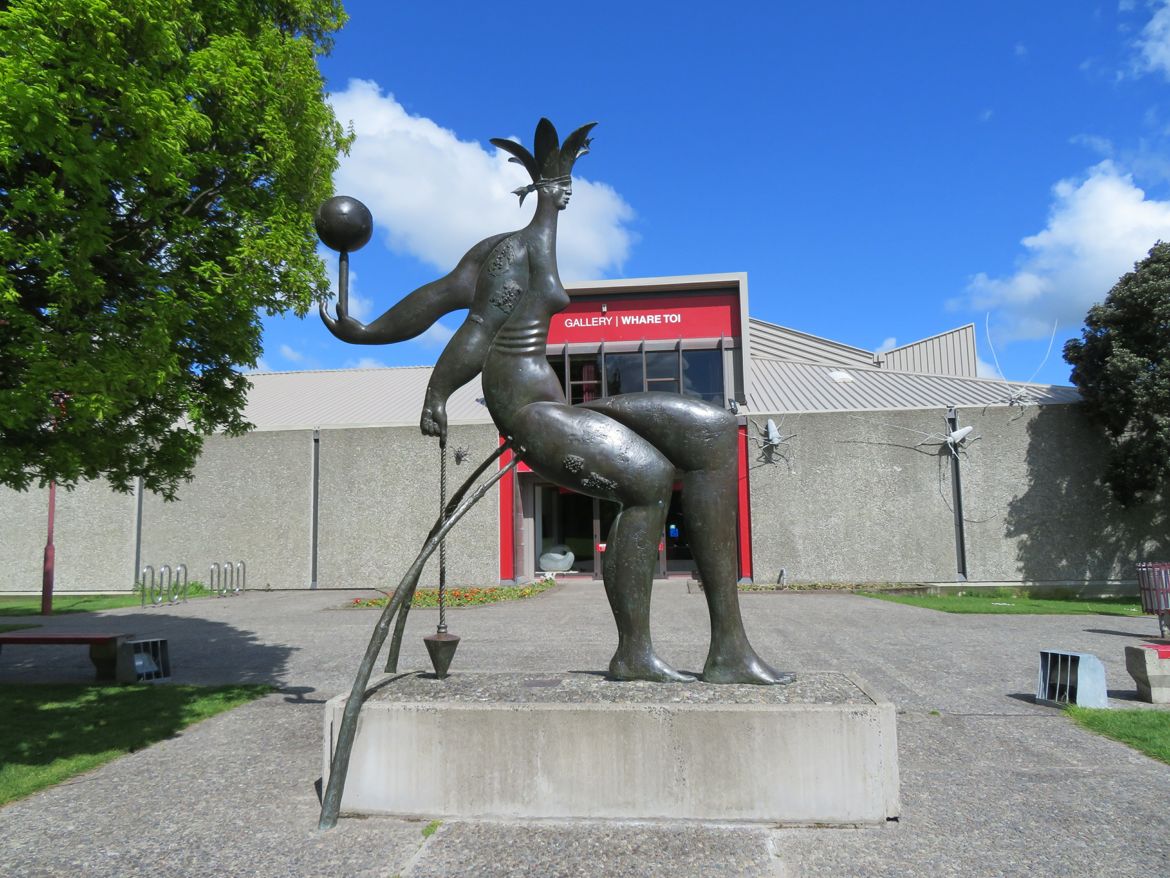
In September 1888 a tableau vivant titled ‘The Sculptor’s Dream’ was staged as part of an All Saints’ Ladies Guild Evening at the Theatre Royal in Palmerston North. Eleven members of the community, dressed in flowing garments, held poses resembling those of classical statuary. These included young women pretending to be sculptures of Flora, Grief and an angel. We know of this tableau from a photo included in a scrapbook compiled by Louisa Snelson (c.1856-1919). Her husband George Snelson (1837-1901), the first Mayor of the Palmerston North Borough Council, is posed seated astride a barrel in the character of Bacchus, the Roman god of wine.
At the centre of the tableau, Miss Eva Haynes appears as a statue of Justice, wearing a blindfold and holding a sword and scales. More than a century later in 1992, a blindfolded figure, this time holding a plumb bob and globe, was unveiled outside the Manawatū Art Gallery (Te Manawa Art Gallery) – Paul Dibble’s iconic sculpture Pacific Monarch. For the Palmerston North artist, this 4.4 metre sculpture represented the realisation of a long-held sculptor’s dream, to produce a monumental work of public art in bronze. Julie Catchpole, the gallery’s director, described Pacific Monarch as “possibly the biggest bronze ever cast entirely in New Zealand” (Manawatū Evening Standard, 21 December 1992). Its creation was made possible thanks to a bequest to Manawatū Art Gallery Society from the late Gertrude Raikes.
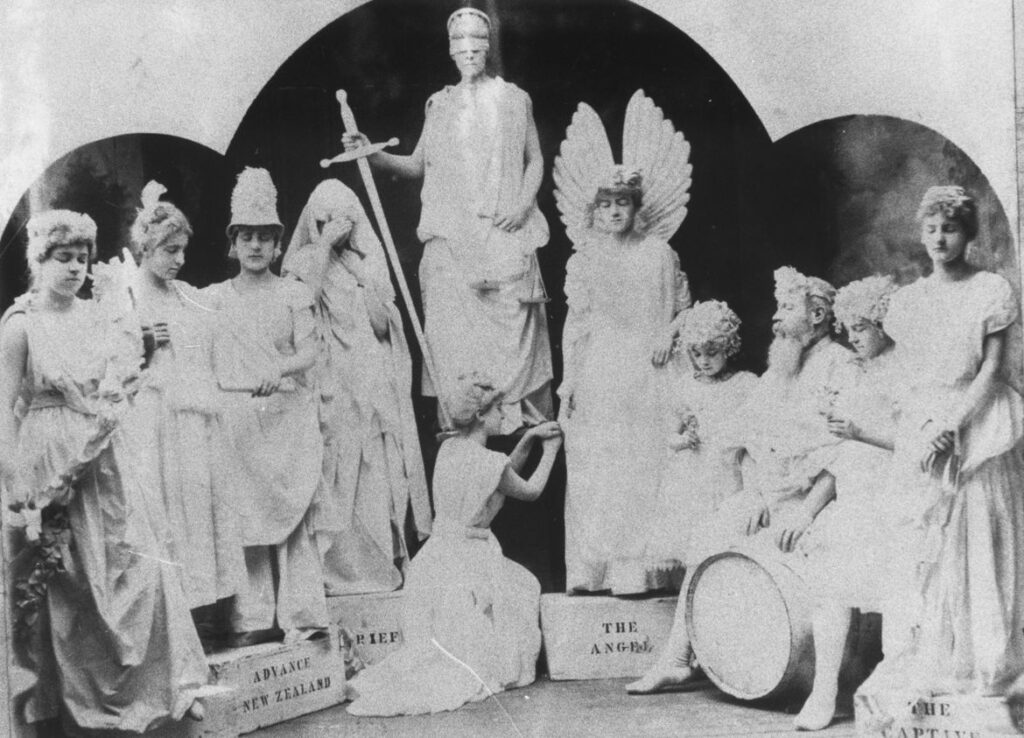
‘The Sculptor’s Dream’ tableau [Manawatū Heritage, 2007P_Pg82_EPN_0290]
The exhibition, Paul Dibble: Continuum is currently on display at Te Manawa Art Gallery (until 10 March 2024). Organised to commemorate the sculptor’s eightieth birthday, following the sad news of Dibble’s passing on 5 December 2023 this display also serves as a memorial tribute to a well-loved Palmerston North artist. The survey exhibition predominantly features sculptures from the late 1980s onward made from bronze, the medium that Dibble loved best and with which he has become most closely identified. He considered bronze a sensual material and sought, in his own words, to “make it sing.”
Dibble is renowned for undertaking the physically demanding and risky process of casting his bronzes himself, establishing his own foundry in Palmerston North. However, during his first two decades as an artist, the prohibitive cost associated with bronze, together with the limited financial support for sculpture in New Zealand, meant Dibble was obliged to produce the majority his art from other materials. After graduating from Elam School of Fine Arts at the University of Auckland in 1967, Dibble moved to Palmerston North in 1976 to take up a position teaching art at the Palmerston North College of Education. Part of the attraction of this role was that it allowed him to spend a couple of days a week working on his sculpture. The 1970s and 1980s was a period of intense experimentation for Dibble, during which he engaged with assemblage, conceptual and installation art.
In a 1978 news article, Dibble asserted that when it came to sculpture: “You can work in anything. As far as I’m concerned any material has in it a certain poetry. Even cheap material, rubbish even, have poetry there” (MES, 22 March 1978). At the time, Dibble was working on a large figure of Christ made of fondue cement for the chapel of Liston College in Henderson. This was one of several commissions for church art, including liturgical items such as candlesticks and tabernacles, that Dibble received during the early years of his career. The artist regarded these projects more as craftwork, but the income they provided helped fund the more creative side of his practice. In Dibble’s later sculpture the religious imagery that appears most frequently are references to the Garden of Eden and fruit from the Tree of Knowledge.
In 1981 Dibble created the multimedia installation Concrete in the Garden at the Manawatū Art Gallery. He explained that this art form was concerned with creating an immersive environment for the viewer: “Instead of making an object, you try to utilise the whole space as an expression of statement.” The impetus for Dibble’s installation was his dislike of the recently-constructed PNCC Civic Administration Building and what he considered the oppressive heaviness of its brutalist concrete form. Instead, his art work “recreated a light fragile space using thin metal rods” which established “the limits of his ‘garden’ and convey that all-important lightness – in an abstract way” (MES, 9 November 1981). Wax figures recline on strips of artificial grass, while brightly-coloured parrots are perched on the metal rods. The birds were a reference to Aotearoa’s location in the South Pacific and a nod to wooden parrots made in school woodwork classes. Ever inventive, Dibble had weighted the sheet-metal parrots with lead-filled beer bottle tops. This meant that the movements of gallery visitors caused the birds to sway gently, animating the space.
Visitors to Continuum will see that New Zealand native birds remain an important theme in Dibble’s later bronze sculptures. The exhibition also features a video showing a restaging of his art work Return of the Daffodil (1997). This piece was itself a reimagining of Spring Transfusion (1979), one of several conceptual works produced by Dibble during the late 1970s that utilised coloured dye crystals and transfusion bottles, recalling a hospital intravenous drip. In both the 1979 and 1997 works, water from the transfusion bottle passes through plastic tubing, seeping into an expanse of canvas that is gradually stained yellow. As the canvas is rotated, the amorphous stains come to resemble the petals of a flower. Despite their starkly different media and aesthetic qualities, Return of the Daffodil foreshadows and complements the sculptures of kōwhai blossoms that Dibble began producing during the 2010s. The bronze petals of these native flower glister through the addition of gold leaf, emphasising both the beauty and preciousness of nature.
During Dibble’s early years in Palmerston North, his creative practice utilised such disparate media as fibreglass, Perspex, feathers, driftwood and – in sculptures like Impossible Dialogue (1988, Massey University) – cut and folded steel plate. At first glance, these multimedia creations seem far-removed from his elegant and sinuous bronze sculptures. However, Dibble transferred the same freedom and inventiveness found in his conceptual and installation art to his later bronzes. Throughout his career, his art has been characterised by quirky juxtaposition, forms that appear precariously balanced, an emphasis on contours, and a tension between flatness and the illusion of three-dimensional volume. Like Dibble’s installation art, many of his public sculptures are designed so that viewers can walk through and around them. All Creatures Great (1996), takes the form of an arch or gateway, beckoning visitors into the Palmerston North City Library. Such works take art outside of the gallery, allowing Dibble’s sculptures to engage with and become an essential part of their surrounding natural or urban environments.
Paul Dibble left the College of Education (by then part of Massey University), in 2002 to focus exclusively on his art. In 2005 he was appointed a Member of the New Zealand Order of Merit and in 2007 he was awarded an Honorary Doctorate by Massey University. By the final decades of his career, he had achieved international recognition, with overseas exhibitions and commissions for his work. Examples of his public sculpture adorn towns and cities throughout New Zealand, but nowhere more so than in his adopted hometown of Palmerston North.
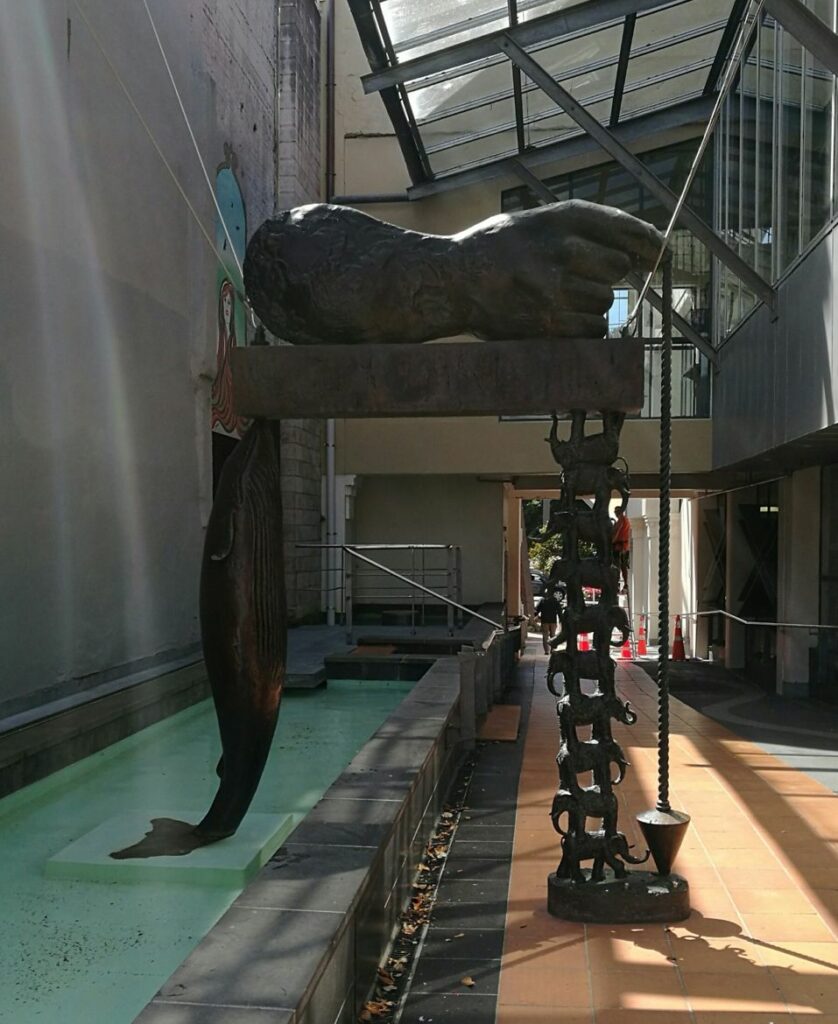
All Creatures Great, Paul Dibble, photo by Heather Glasgow [Manawatū Heritage, COMM1488916484]


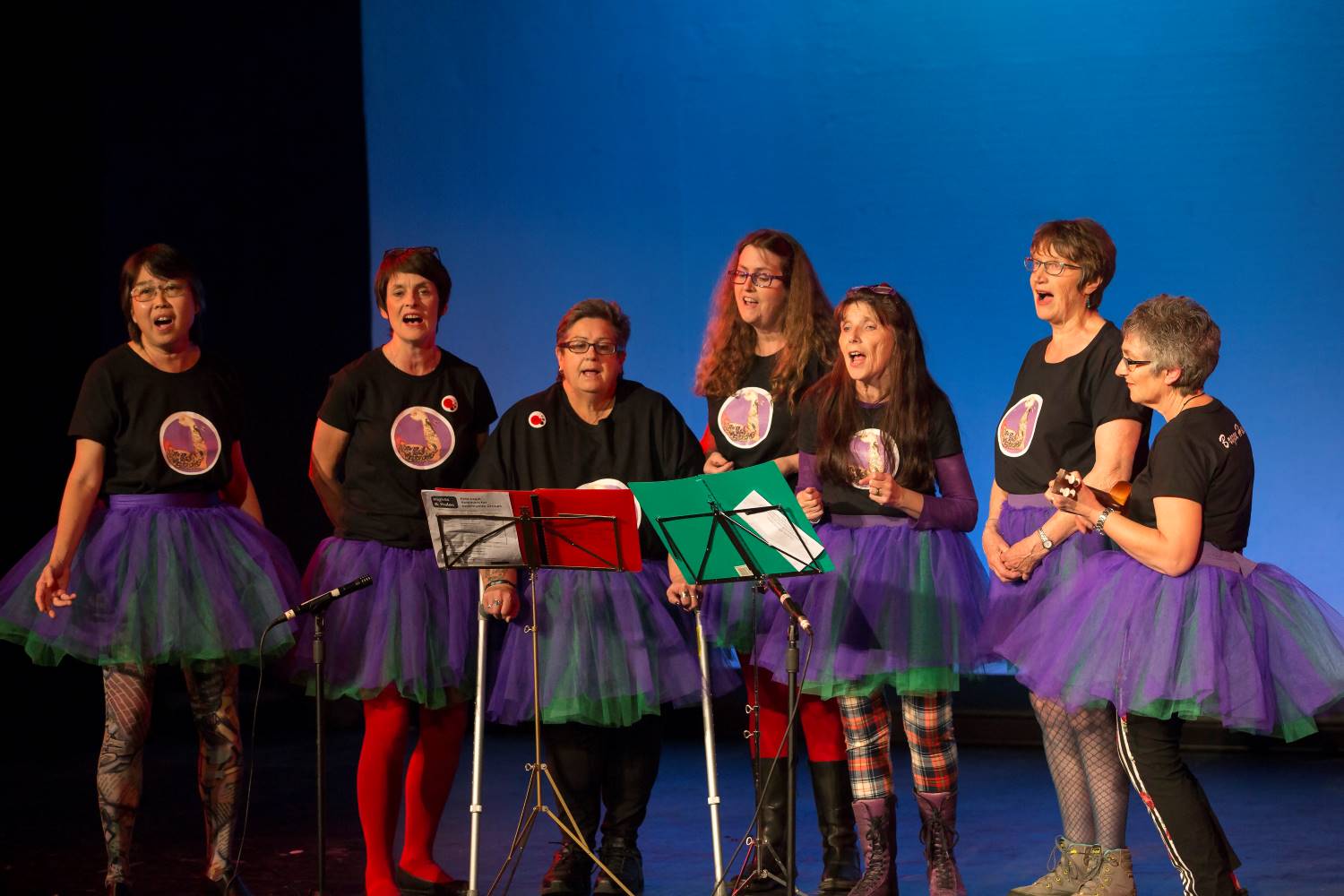
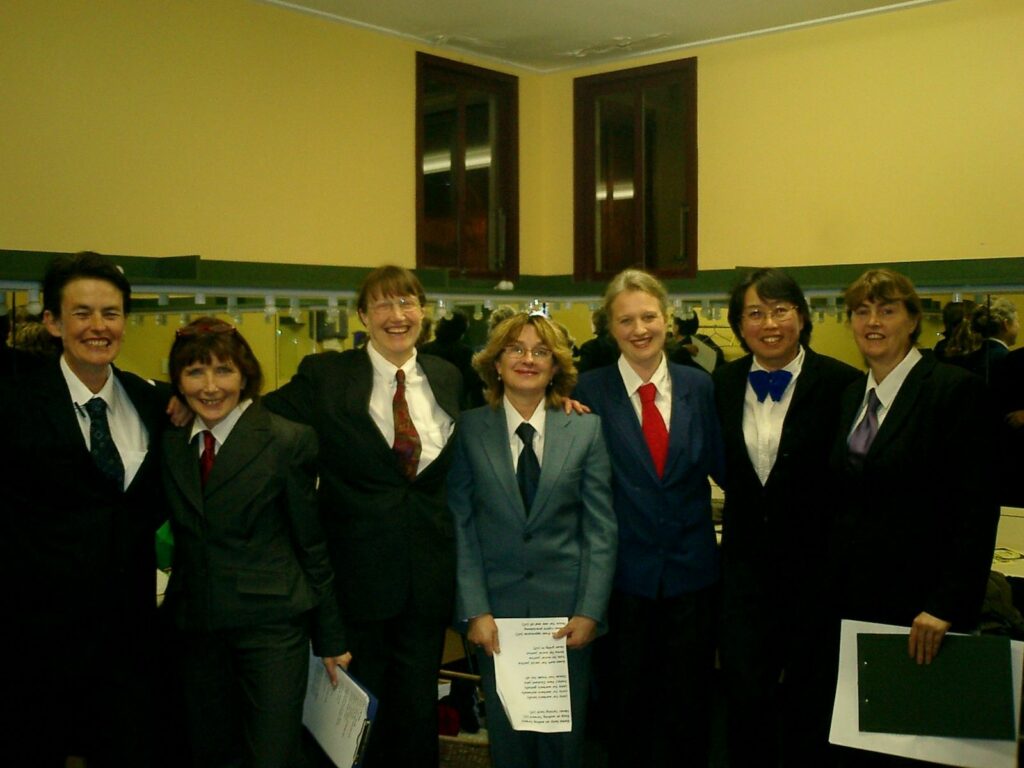
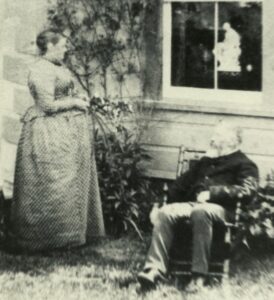

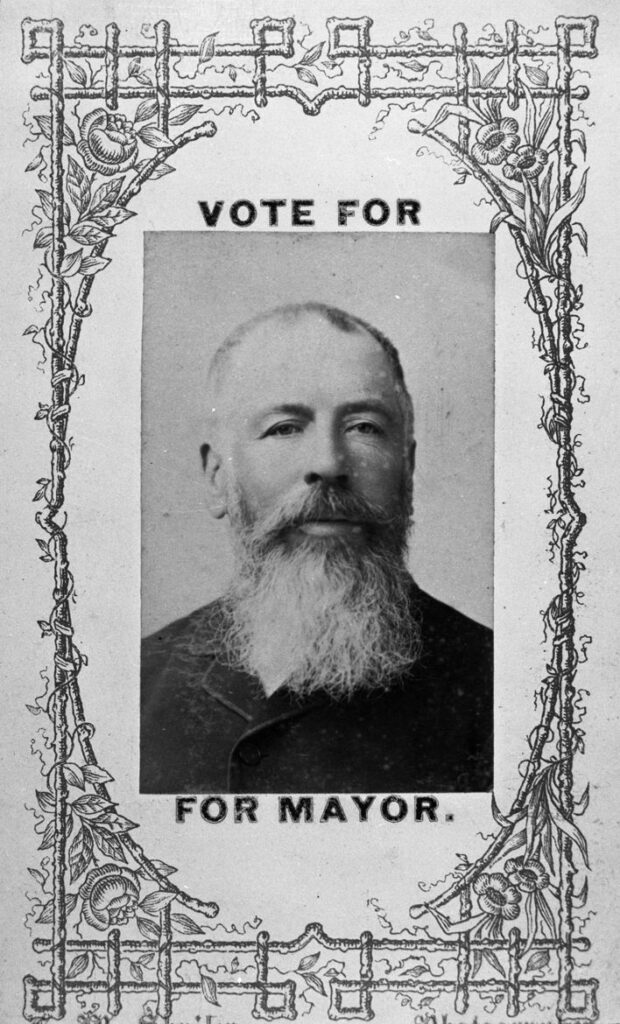

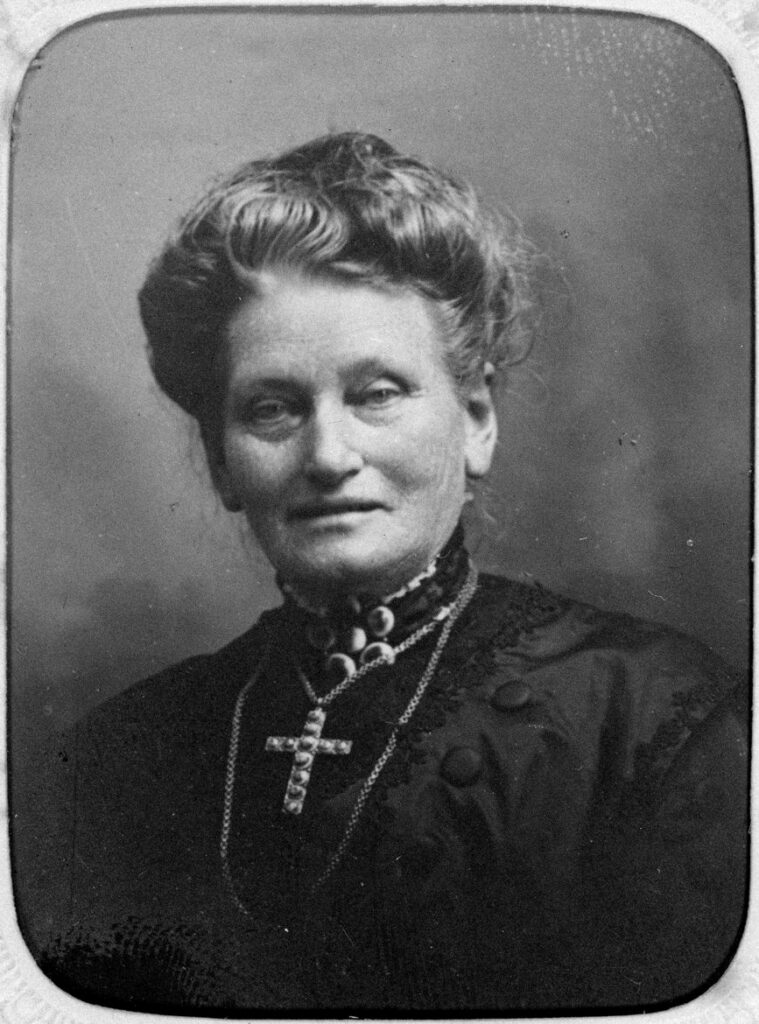


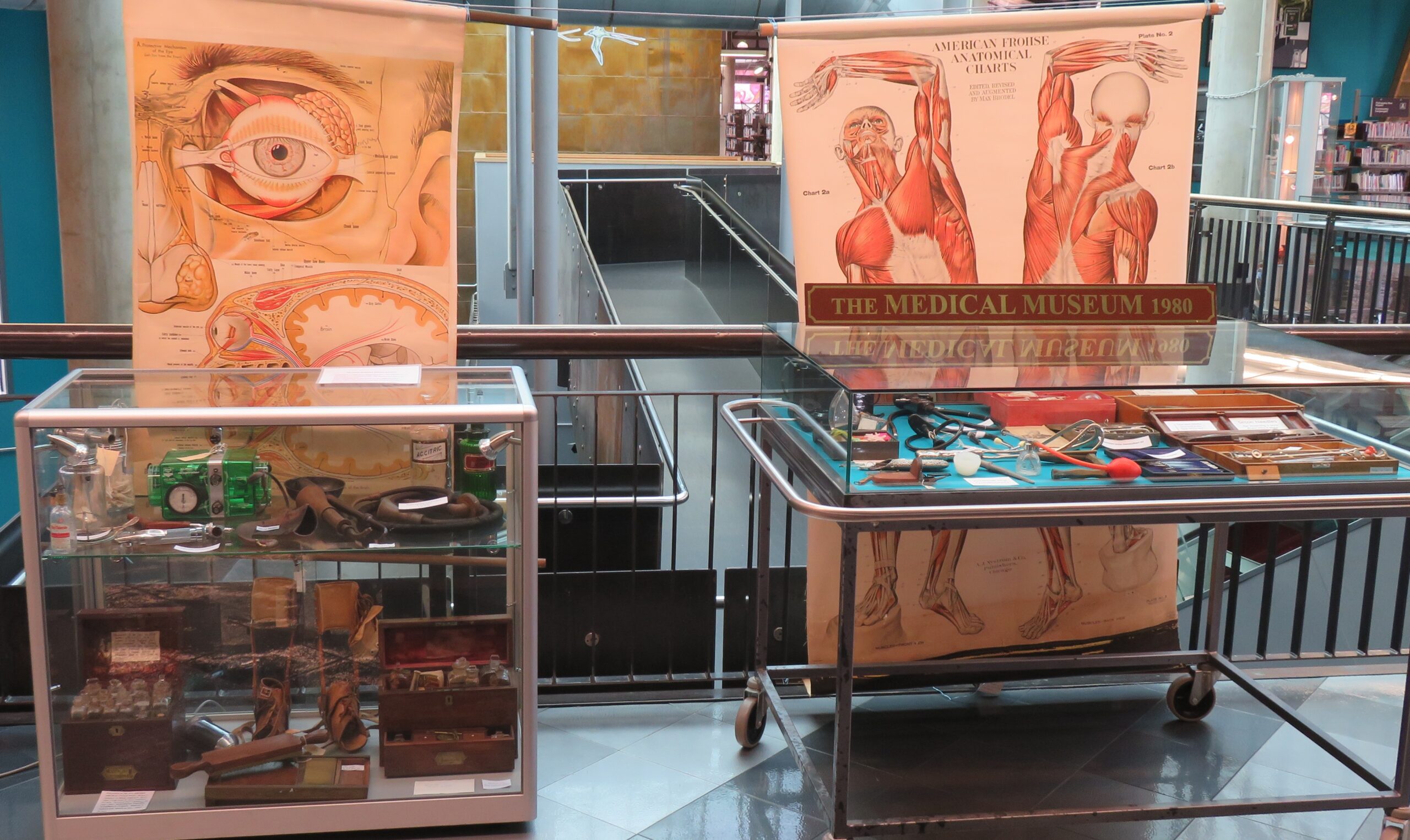
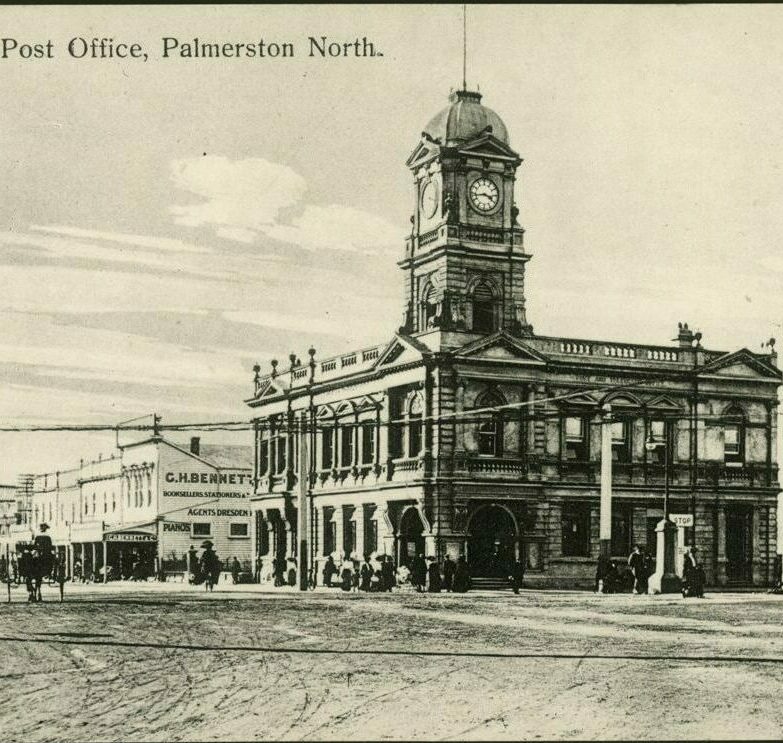



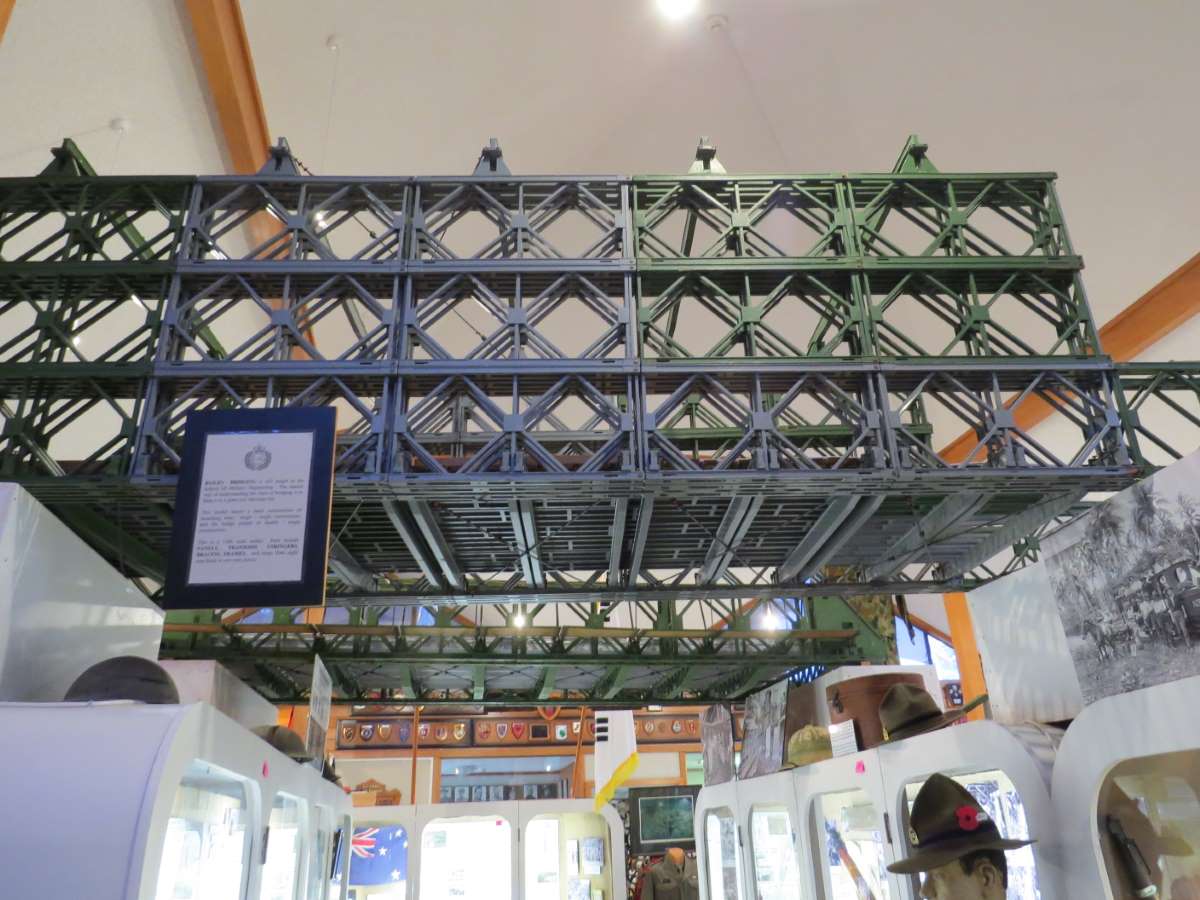
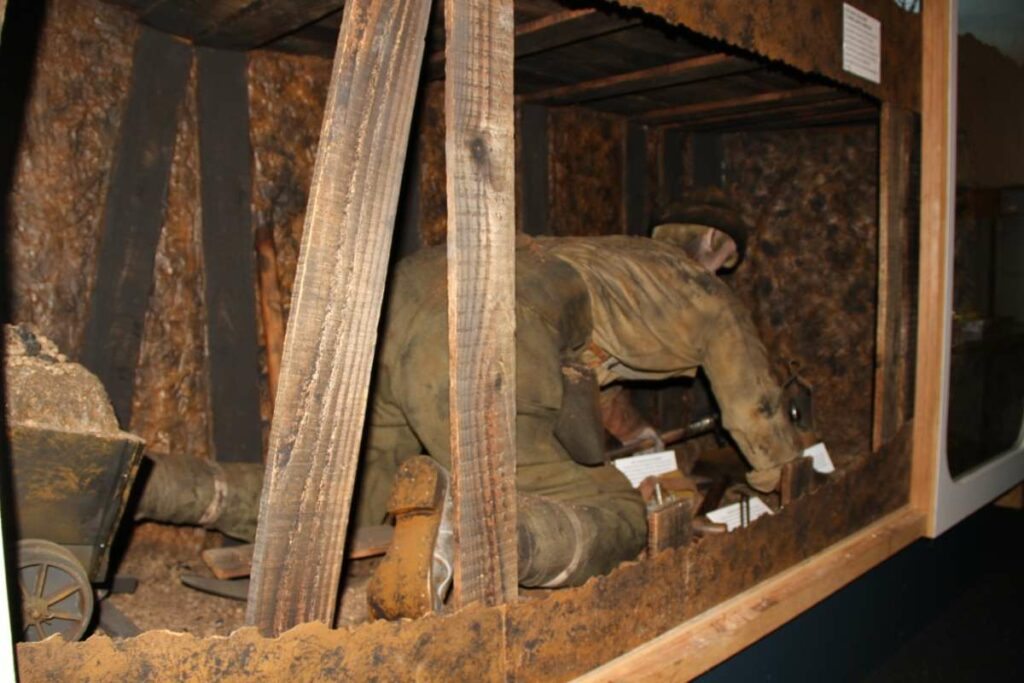
Recent Comments